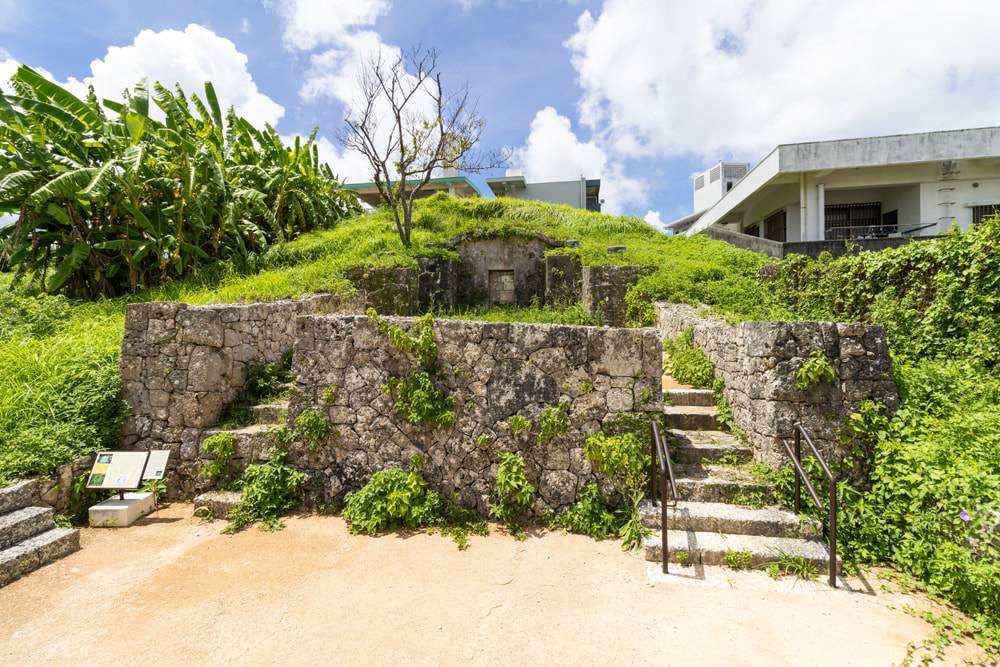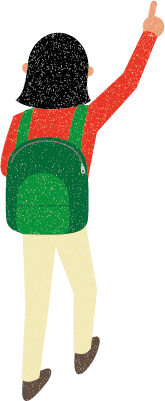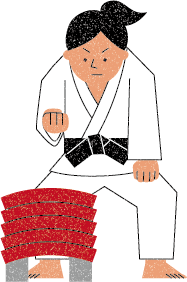Introducing the "Motobu Udun Tomb" in Ganeko, Ginowan City, a historical site|Okinawa Dento Karatedo Shinkokai
Ginowan City

The Motobu Udun tombs, located in Ganeko, Ginowan City, are traditional turtle shell tombs recognized as important cultural heritage sites of the Ryukyu Kingdom. This tomb holds significant historical value as the burial site of the Motobu family, which traces its origins to Sho Koshin (Motobu King Chohei), the sixth son of King Sho Shitsu, the tenth king of the Second Sho dynasty of the Ryukyu Kingdom.
The date of construction of the Motobu Udun tomb is estimated to be after 1694, based on the records of the "Oudaiki Zen." The remains of the founder Chohei were initially laid to rest in Shuri Sueyoshi, but after the collection of bones in 1694 (Kouki 33), the remains were moved to Ganeko. It is believed that the present tomb was built at this time.
In terms of architectural style, the Motobu Udun tomb serves as a valuable example of the characteristics of early turtle shell tombs. Of particular note is the gentle curve of the tomb's front roof, which reflects the high level of architectural technology of the time. The interior of the tomb is elaborately constructed, featuring a distinctive arched ceiling. Inside, there is a shelf at the back and another along the wall, where a total of ten cinerary urns were placed.
The structure of the tomb yard is also noteworthy. The inner and outer yards are separated by a nearly one-meter elevation difference created by stacked stones, a design that is a common feature of the Naha City designated cultural property, the "Ginowan Palace Tomb." It is believed that the height difference from the entrance to the tomb to the front of the tomb chamber was intended to express the high status of the person buried there and the formality of the tomb as a noble's tomb.
According to tradition, the premises of the Motobu Udun tomb were extensive, encompassing an area of 2,000 tsubo. The private road remains along the northern side of the entrance to the tomb garden, characterized by a unique structure that comprises turns at 90-degree angles approximately every ten meters. It is believed that this private road was designed based on the traditional Okinawan belief in Yanamungeshi, which involves repelling evil spirits.
In addition to the tomb, the Motobu family played a significant role as the inheritors of the traditional martial art known as "Motobu Udundi." Particularly, Motobu Choyu (1865-1928), who became the 11th head of the family, is known as a figure who, despite having a noble lineage as a member of the Ryukyu royal family, dedicated himself to the development of martial arts.
From an early age, Choyu learned Motobu Udundi under his father and later received instruction from Matsumura Sokon and Itosu Anko of Shuri-te. His outstanding skills, particularly his Motobu-no-keri, were highly regarded; in 1923, he established the Okinawa Karate Research Club in Naha, contributing to the spread of Ryukyu martial arts.
The Motobu Udun tombs were officially designated as a cultural property (historic site) by Ginowan City in 2021. This designation serves as proof of the high historical and cultural value of the Motobu Udun tombs. In particular, the details regarding how the tombs of the Hōbu family were constructed in Ganeko, Ginowan City, which is located far from Shuri, are an important clue to understanding the relationship between the royal family and the Ginowan Magiri at that time.
The Motobu Udun Tombs are widely recognized as valuable cultural assets that convey the architectural techniques, funeral culture, and social structure of the Ryukyu Kingdom to this day, as well as historical remains that are deeply connected to martial arts culture through the Motobu family. The Motobu Udun tombs, as architectural heritage, and Motobu Udundi, as the secret martial arts of the Ryukyu royal family, are both important elements that convey the rich history and culture of the Ryukyu Kingdom to the present day.



